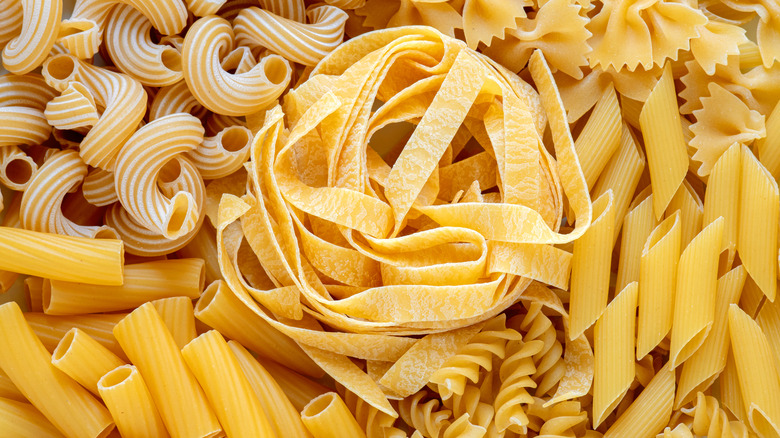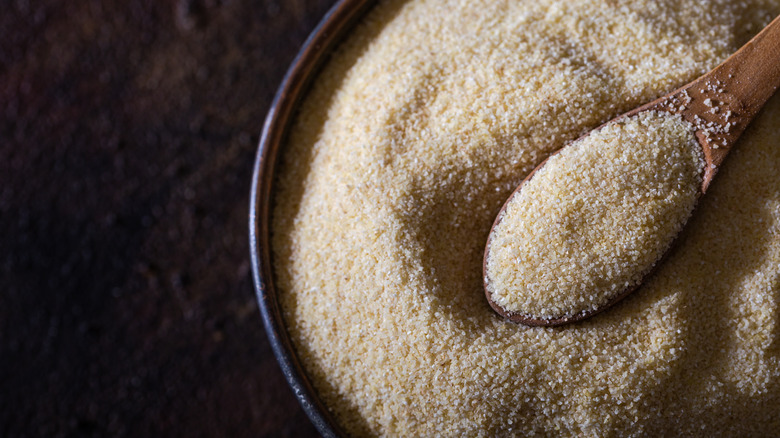What Durum Wheat Semolina Means For Store-Bought Pasta
In many ways, food is the closest thing we have to a universal language. No matter where you are or where you come from, we all understand the meaning of, "Mmmmmmm!" Arguably no people have harnessed the cross-cultural power of food better than Italians, as evidenced by a 2019 survey from data analytics firm YouGov, which placed Italian food as the most popular cuisine worldwide. Pasta was cited as a key factor in this result, which shouldn't surprise anyone since, unless you're gluten-intolerant, odds are high that you love pasta too.
The Food Institute reveals that pasta is growing in popularity, establishing itself as the go-to comfort food in an era that has been, to put it lightly, stressful. Given this fact, now seems as good a time as any for you to brush up on your noodle knowledge and take your pasta game to the next level. Let's dive right in by breaking down the kind of flour you want to look for in store-bought pasta: that being durum wheat semolina.
Durum wheat makes stronger dough
Most flours that you'll find in the grocery are made from "common wheat," which accounts for about 80% of the world's total wheat harvest, according to major flour brand Bob's Red Mill. Though common wheat is perfect for many baked goods, pasta makers need something with more protein. The protein content of flour is very important because protein equals gluten, and gluten is what gives structure to dough. Pasta needs to hold a variety of unique shapes without turning to goop when it boils, so you need high-gluten flour. Durum is an extremely hard form of wheat (durum means "hard" in Latin) that takes tremendous force to grind, but contains an extremely high level of protein, making it perfect for pasta, per Food52.
But, just choosing durum wheat isn't specific enough, as America's Test Kitchen explains that two general types of durum flour are available: durum wheat flour, which is finely ground like all-purpose flour, and durum wheat semolina, which is more coarsely ground, like fine grains of sand. The Test Kitchen warns that plain durum wheat flour can lead to gummy pasta dough, so it's much preferable to choose durum wheat semolina. Bob's Red Mill explains that durum semolina has 13% protein or more, compared to just 8-11% protein in all-purpose flour, concrete proof of durum's superior strength. That strength translates into the toothsome chew we love from pasta, so even though semolina can be a bit more expensive, it's worth it.

